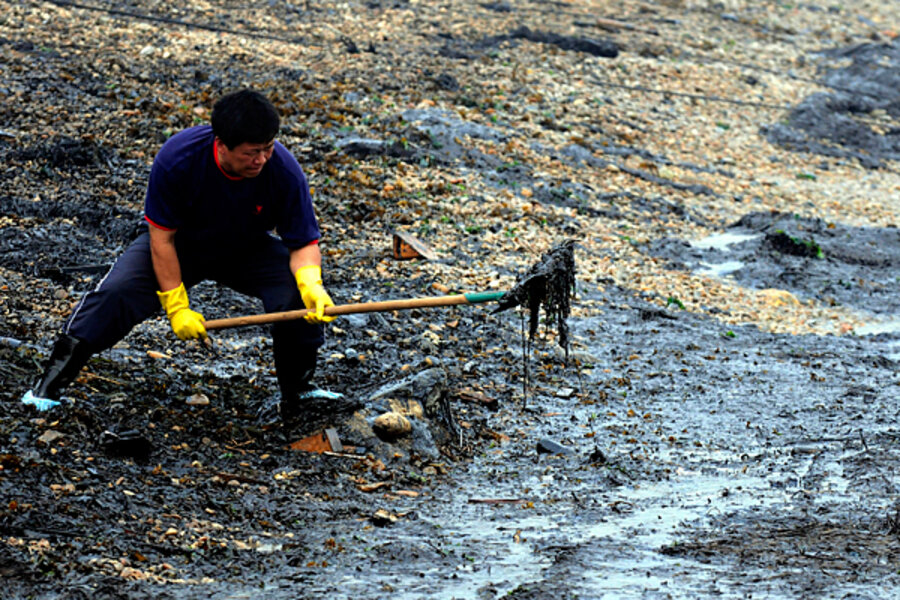Oil-eating bacteria to the China oil spill rescue?
Loading...
When there’s a huge oil spill in the waters off your country's coast, who ya gonna call? Oil-eating bacteria.
Two pipelines exploded July 16 at a Chinese oil storage depot in the port city of Dalian. Crude oil leaked into the Yellow Sea, then burned in a firestorm for 15 hours. At least one worker died in the cleanup earlier this week.
China was slow to say what caused the incident, but an investigation has found that a chemical used to remove sulphur from crude oil was mistakenly pumped into pipelines, reports Sky News, citing the State Administration of Work Safety. That action triggered the explosion.
Current estimates put the spill at about 1,500 tons of oil covering a 170-square-mile swath of the Yellow Sea. That's a fraction the size of the Gulf oil spill, which covers anywhere from 2,500 to 9,100 square miles.
China mobilized hundreds of local fishing boats and vessels to aid in the cleanup, but workers were woefully unprepared, initially using plastic bags, straw mats, and even chopsticks to remove oil from the water, according to news reports.
Now, the government is deploying another tool.
Enter oil-eating bacteria.
Forty large oil skimmers have dumped more than 23 tons of Chinese-grown, oil-eating bacteria into the Yellow Sea since July 20. "The use of the oil-eating bacteria at the Dalian spill is the first time we have used biotechnology to solve an environmental pollution problem," said a spokesman for Micro-cleaner Biotechnology Corporation in Beijing.
The Daily Telegraph (London) explains that "the bacteria break down the toxic hydrocarbons in oil into less harmful compounds. They were used after the Exxon Valdez spill in Prince William Sound, Alaska, in 1989."
True, agrees Newsweek, but it's not necessarily a miracle solution. “Bioremediation has been used successfully to mitigate many previous oil spills, including Exxon's. But success is defined differently than one might think in these cases. Bioremediation can eliminate only a portion of the compounds present in oil, and the process can take years.”
Long stretches of China's shoreline are now contaminated and emptied. Fishing, important to the region, has been banned for the rest of the summer. Dalian's seafood farming and tourism industries have taken critical hits, Green Peace China said in a statement, estimating that 10,000 shellfish farms have been contaminated.
China still hopes to contain the spill before it reaches international waters. Government officials say their goal is to finish the cleanup over the weekend, though experts warn it could take much longer.
Related oil spill articles:





